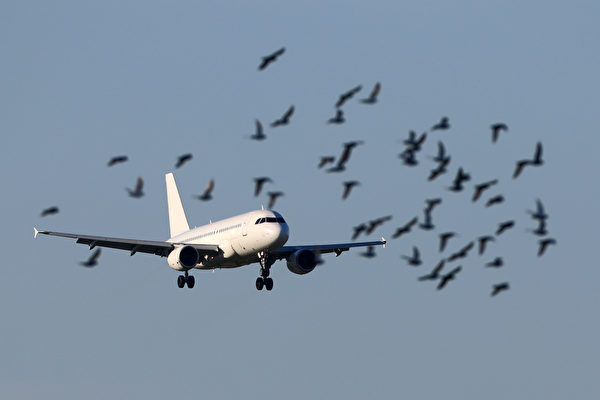The so-called “bird strike” refers to accidents in which birds collide with aircraft, especially when they hit the engine, which can lead to severe losses and even casualties. So, how should pilots handle such accidents?
According to the aviation news website “Simple Flying,” bird strikes are quite common in commercial aviation, especially around airports in densely populated areas, where such accidents occur more frequently. Whether a bird strike is imminent or not, pilots must do everything in their power to prevent it.
During the final approach of the aircraft (the last segment before landing), pilots may notice a bird strike has occurred or see a group of birds ahead that could potentially cause such an incident. At this point, they must decide whether to continue the approach or go around. They must consider what impact this decision will have on flight safety.
As for how pilots should respond to a bird strike, it depends on the location of the aircraft hit, the extent of damage, and the airline’s relevant regulations. In most cases, bird strikes are not treated as emergencies unless they result in reduced aircraft performance or abnormal operations.
Examples of this include engine malfunctions, antenna structure failures, or hydraulic line failures. Pilots must operate according to the abnormal or emergency checklists associated with each event. Many airlines do not have a “bird strike checklist” because bird strikes are not the primary concern; subsequent system malfunctions are.
Doug Drury, an aviation professor at Central Queensland University in Australia, recently wrote on The Conversation website that both Boeing and Airbus, the two major commercial aircraft manufacturers, use turbofan engines. These engines use a series of fan blades to compress air, add fuel and flame to generate the thrust needed for takeoff.
When birds collide with these engines, they can severely damage the fan blades, leading to engine failure. Therefore, engine manufacturers test the safety of these engines by launching high-speed frozen chickens at them when the engines are running at full speed.
Simple Flying points out that pilots often are unsure if they have experienced a bird strike. They may see birds flying near the aircraft but cannot always tell if a bird has hit the plane. If they suspect a bird strike has caused instrument issues, they will closely monitor hydraulic, electrical, pneumatic, and flight control devices.
Even after landing, pilots may not be aware of a bird strike. Sometimes, during a visual inspection while walking around the aircraft, they may spot feathers or other evidence that informs them of a bird strike.
In the United States, all airline pilots must fill out a form developed by the Federal Aviation Administration (FAA) after experiencing a bird strike incident. This report is added to the FAA’s Wildlife Strike Database. This real-time tracking platform can be used to assess the frequency and locations of bird strikes in U.S. airspace.
The database shows that there are over 15,000 bird strike incidents in the United States each year, with over 4,600 incidents involving U.S. pilots at foreign airports.
With so many bird strike incidents occurring annually, it evidently leads to significant economic losses. Just in 2021, bird strike incidents cost U.S. airlines $328 million and 140,000 hours of downtime.
In light of this, various measures are being taken, and new technologies are constantly being developed to prevent bird strikes to ensure safety and protect wildlife. Worldwide, airports dispatch staff to use alarms and loud devices to drive away birds. Airports with the highest bird strike rates are also conducting bird migration detection and prevention research.
Despite pilots being trained to handle malfunctions caused by bird strike incidents, such accidents are unavoidable. It is hoped that the advancement of bird repellent technology and detection will reduce the occurrence of bird strike incidents in the near future.

